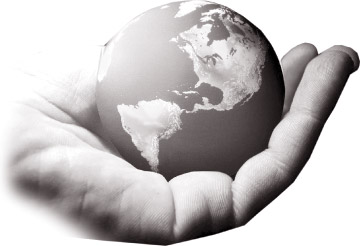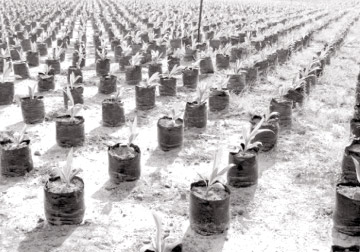|
Millennium Consumption Goals:
How the rich can make the planet more sustainable
By Prof. Mohan MUNASINGHE
 Millennium Consumption Goals (MCG) could help make our development
path more sustainable, by focusing on the 1.4 billion people in the
richest 20 percentile of the world’s population. They consume over 80
percent of global output, or 60 times more than the poorest 20
percentile. Instead of viewing the rich as a problem, they should be
persuaded to contribute to the solution. The MCG will complement the
Millennium Development Goals (MDG) designed to help the world’s poor.
The MCG need not be mandatory targets, but rather a set of benchmarks to
be achieved by a combination of voluntary actions by sustainable
consumers and producers, supported by enabling government policies. Millennium Consumption Goals (MCG) could help make our development
path more sustainable, by focusing on the 1.4 billion people in the
richest 20 percentile of the world’s population. They consume over 80
percent of global output, or 60 times more than the poorest 20
percentile. Instead of viewing the rich as a problem, they should be
persuaded to contribute to the solution. The MCG will complement the
Millennium Development Goals (MDG) designed to help the world’s poor.
The MCG need not be mandatory targets, but rather a set of benchmarks to
be achieved by a combination of voluntary actions by sustainable
consumers and producers, supported by enabling government policies.
Household consumption drives modern economies, but unsustainable
consumption, production and resource exploitation have led to multiple
crises that threaten the future survival of humanity. Climate change is
now considered the ultimate threat multiplier which will exacerbate the
formidable problems of development we already face - like poverty,
hunger, illness, water and energy scarcities, and conflict.
MCG pathway
While I have been arguing for MCG for many years in closed meetings,
the time was ripe to formally propose the idea at the recent UN sessions
preparing for the forthcoming UN Conference on Sustainable Development
(UNCSD) 2012 in Brazil.
There are many advantages to this complementary path to global
sustainability. First, the rich live in both developed and developing
countries, so the idea cuts across country boundaries, thus reducing the
potential for deadlock due to nationalistic self-interest. Second, since
they account for over 80 percent of consumption and pollution (including
carbon emissions), small shifts towards more sustainable consumption can
significantly reduce the burden on the environment and free up more
resources to raise the consumption of the poor. Third, by relying on
influencing the behaviour of large numbers of individual households, the
approach has the potential to yield quicker results compared to top down
government policies and large, long-term industrial investments. Fourth,
it mobilises, empowers and links up sustainable consumers and producers
(many of whom operate global supply chains) into a virtuous cycle that
could spread quickly. In fact, the focus is on setting targets for
ACTION NOW by civil society and business, without having to wait for
governments, which move glacially. This process also puts pressure on
leaders who lack the political will to act quickly and decisively.
|

The poor lack access to basic necessities such as food |
Basically, the MCG approach is only one element (albeit an important
one!) of the overall goal of sustainable development. It is not just a
nice catchy slogan, but has substance and a practical methodology
underlying it. It is part of broader ongoing initiatives on Sustainable
Consumption and Production (SCP) and the green economy. In turn, SCP is
an essential step on the path to sustainable development, and may be
linked to a holistic and practical framework for making development more
sustainable, called Sustainomics, which I proposed 20 years ago at the
1992 Rio Earth Summit. It would be fitting indeed if the MCG idea would
become part of the agreements and programs that will emerge from UNCSD
2012 (also called Rio+20)!
Some possible MCG target areas include: conservation of scarce
resources like energy and water, efficient transport, sustainable
dwellings, healthier diets and obesity reduction, healthier lifestyles
and greater fitness, progressive taxation and taxes on luxury goods,
sustainable livelihoods, reduced workweek and improved working
conditions, etc. Some types of expenditures undertaken by governments on
behalf of consumers, also need to be targeted - e.g., the US$1.5
trillion per year spent on armaments worldwide.
Current situation
The MCG are needed because the world is currently facing economic,
social, and environmental risks, best characterised by a “bubble”
metaphor based on greed and false expectations. A few enjoy immediate
gains while the vast unsuspecting majority would pay huge future costs.
These threats can interact catastrophically, unless they are addressed
urgently and in an integrated fashion.
First, the ongoing economic recession was caused by the collapse of a
greed-driven asset bubble which inflated financial values well beyond
the true value of underlying economic resources.
Second, a social bubble based on poverty and inequity is growing
despite economic growth, excluding billions of poor from access to
productive resources and basic necessities, like food, water and energy.
Poverty has been exacerbated by the economic recession, worsening
unemployment and access to survival needs.
Finally, mankind faces the bubble of environmental harm and resource
shortages, due to myopic economic activities that severely degraded
natural assets (air, land and water) on which human well-being
ultimately depends. Climate change is just one grim global manifestation
of this threat, and ironically, the worst impacts will fall on the poor
who are least responsible for the problem.
Unfortunately, human responses to these issues have been
uncoordinated and inadequate. Governments quickly found over US$ five
trillion for stimulus packages, to revive shaky economies. Meanwhile,
only about US$100 billion per year are devoted to alleviate poverty, and
far less to combat climate change. The recession has further dampened
enthusiasm to address the more serious long term social and
environmental issues.
|

Sustainable agriculture |
Clearly, world leaders lost a major opportunity to allocate a much
larger share of the stimulus packages to green investments, sustainable
livelihoods, education and health, and safety nets for the poor, instead
of mainly propping up banks and promoting unsustainable consumption. We
should now seek to recapture the momentum for longer term change, by
promoting sustainable consumption and production, including the setting
of millennium consumption goals for the rich to complement the MDG for
the poor.
Sustainable consumption and production
Anthropogenic carbon emissions exemplify modern resource
over-exploitation. The arguments below apply equally well to other
scarce resources like energy, water and food. The consumption of 1.4
billion richer humans accounts for about 80 percent of total carbon
emissions. Making their consumption patterns more sustainable will
reduce carbon emissions (and other types of resource use) significantly
- e.g., using energy saving light bulbs, washing laundry at lower
temperatures, eating less meat, planting trees or using more fuel
efficient cars. Such actions will not only save money, but are also
faster and more achievable than many so-called big technology solutions.
Furthermore, families that purchase low-carbon products and services can
stimulate innovation in businesses, while encouraging politicians to
take radical steps towards a lower carbon world. Many existing “best”
practice examples can be replicated more widely, while innovative
businesses are already developing the “next” practice products and
services of the future.
A “virtuous cycle” of mutually supportive sustainable consumers and
producers can cut across national boundaries and narrow interests. It
complements the traditional top down emphasis on action by governments,
who lack political will to take bold steps. Finally, the rich must share
scarce resources with the many billions of poor and help them emerge
from poverty. The affluent also need to set a better example that will
encourage the poor to seek more sustainable growth and consumption
paths.
The affluent can maintain or improve their quality of life, while
reducing the burden on the environment, using existing technologies and
policies. Several leading multinational companies have already set
themselves challenging targets for reducing their carbon emissions,
waste discharges, and energy and water use, in the coming decades. This
is a welcome contrast to the continuing reluctance of world leaders to
boldly address pressing climate change and sustainable development
issues. Progressive business leaders have also pledged to overcome
barriers faced by consumers, including the availability and
affordability of sustainable products, lack of information and product
labelling, and a sense of powerlessness. The same advertising that now
promotes over-consumption and waste could be used to encourage more
sustainable consumption. Over a period of time, social values and habits
could be changed to favour sustainable behaviour, in the same way that
public attitudes have shifted against tobacco smoking in recent decades.
The sustainomics framework, provides four core principles that underpin
this novel approach to addressing multiple global problems together.
* First, Making Development More Sustainable (MDMS) becomes the main
goal. It is a step-by-step method that empowers people to take immediate
action. It is also practical because many unsustainable activities are
easy to recognize and eliminate NOW. The MCG and sustainable
consumption-production path epitomize this approach.
* Second, the three key dimensions of the sustainable development
triangle (economic, social, and environmental) must be given balanced
treatment. Consumers need simplified and relevant information on these
aspects, to make sustainable choices, via pricing, advertising,
labelling, and the media.
* Third, our thinking should transcend traditional boundaries. It is
essential to replace unsustainable values like greed with sound ethical
principles, especially among the young. People must be made aware that
problems like climate change span the whole planet, play out over
centuries, and concern every human being on earth. Stakeholders need to
work together to meet the common threat - more than ever, government
needs the support of civil society and business. Trans-disciplinary
analysis will help producers find innovative solutions that cut across
conventional disciplines. Sustainable consumption and production
requires such a revolution in thinking and behaviour.
* Finally, full life cycle analysis using integrated tools is
required. In particular, producers need to re-examine the entire value
chain from raw material extraction to consumer end use and disposal,
from the economic, social and environmental perspectives.
This will help identify hot spots where innovation can improve
production sustainability, reform pricing, and yield accurate labelling
information (e.g., carbon footprint).
The principles of industrial ecology would help to minimize both
resource inputs and waste outputs. Many excellent examples of
sustainable consumption and production already exist worldwide, based on
the application of known technologies and policies.
Concluding ideas
Ordinary citizens and businesses are often ahead of political leaders
in terms of willingness to address sustainable development issues,
including climate change. Given the many existing best practice
examples, we do not need to wait for new technologies, laws or
infrastructure. Consumers can be encouraged to behave more sustainably
without lowering their quality of life, starting with millennium
consumption goals for the rich that parallel the millennium development
goals for the poor.
All human beings are stakeholders, when it comes to sustainable
development and climate change. Consumers and producers can and must
strive to make development more sustainable — economically, socially and
environmentally. By acting together now, we will make the planet a
better and safer place for our children and grandchildren.
The author is the Chairman of the Munasinghe Institute of Development
(MIND) in Sri Lanka, and Professor of Sustainable Development at the
University of Manchester, UK. He shared the 2007 Nobel Prize for Peace
(as vice-chair, IPCC-AR4). Recent research at MIND and the University of
Manchester has contributed to some of the ideas in this article.
E-mail: [email protected]
|

